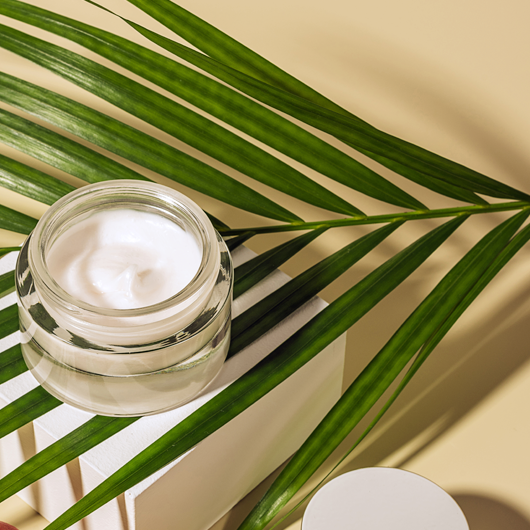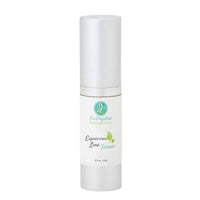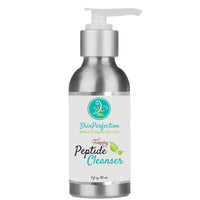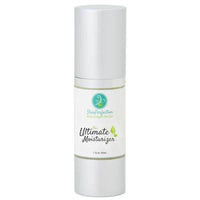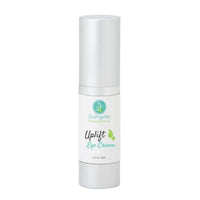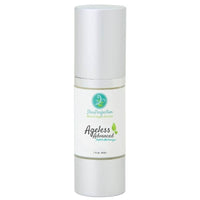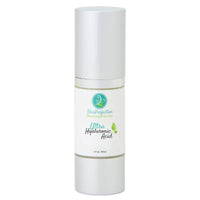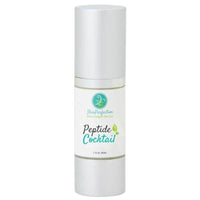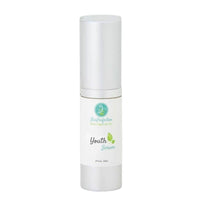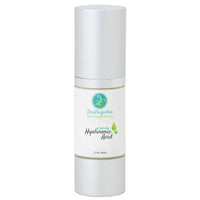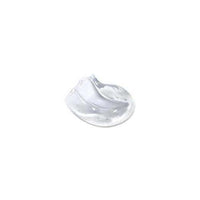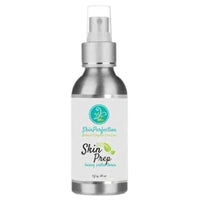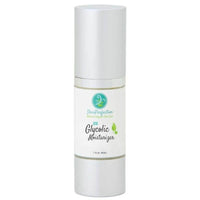Dry or mature
What is Dry, Mature Skin
Dry, mature skin is commonly associated with aging, characterized by reduced natural oils and moisture content. As skin ages, it undergoes various changes, such as decreased sebaceous gland activity, leading to reduced oil production.
Consequently, the skin's natural ability to retain moisture diminishes, making it appear and feel drier. In addition, mature skin tends to lose its elasticity and firmness due to decreased collagen and elastin production.
As a result, it becomes more susceptible to fine lines, wrinkles, and sagging. The combination of these factors — reduced moisture, diminished elasticity, and the onset of age-related imperfections — defines what is commonly called dry, mature skin.
As we age, so does our skin. Mature complexions can be hard to deal with, but it doesn't have to be your reality.
At Skin Perfection, we work to help reduce the signs of aging. Our products contain some of the best ingredients to help regenerate aging skin.
If you have mature skin, you must understand how to care for and treat it so your skin is as healthy as possible. Learning what products and ingredients work best to help mature skin will help you better understand how to improve it.
You deserve to give yourself the reality of a visibly younger-looking complexion.
The Environment and Dry Skin
Dry skin comes in two varieties but can also arise due to natural aging. Dry skin can be from naturally dry skin, no matter where you live. Further, there is dry skin from living in a dry environment.
For example, women in desert regions will naturally struggle with dry skin more often than those in humid climates. However, some women will have dry skin even if they live in the most humid regions of the world. This means their skin cannot resist the moisture it naturally creates and needs topical moisture applied.
An over-tight, uncomfortable feeling characterizes dry skin, often accompanied by flaking, cracking, or reddening. When skin becomes dry, it becomes very textured, revealing every fold and crevice. Even if the skin is not wrinkled, it can look wrinkled because it does not have adequate moisture.

Dry skin can become painful and exacerbate certain skin conditions if not appropriately moisturized. It occurs when the cells cannot hold onto the sebum that naturally occurs. Or when the skin does not produce enough sebum.
Too Much Oil? Not Enough?
Sebum is the oil that contributes to acne but also keeps our skin looking fresh and young. Cells in healthy complexions collect and hold this moisture. Cells in dry skin cannot perform the same function; instead, the skin has insufficient moisture for the cells to collect and utilize.
Dry skin is most common on the face, hands, elbows, and knees, though it can occur anywhere on the body. It is common for most women to have some dry skin from time to time due to exposure to the elements or after a hot, steamy shower or bath.
Those with a chronic dry complexion will always have dry skin, sometimes even after moisturizing it.
Dry skin is most common after adolescence and early adulthood, as the skin matures. We often produce too much sebum in our youth, blocking pores and creating an oily sheen. After this period of too much moisture, your complexion might provide too little.
As the skin ages, it is less able to produce the sebum it needs, resulting in dry, dull skin.
The first thing to do is to stop using soaps that zap moisture from the skin. But unfortunately, this is a common theme in commercial products.
It is a scientific fact that soaps leech moisture away from the skin's natural barrier without replacing it.
Pick a cleanser that is fruit-based or contains hyaluronic acid. Hyaluronic Acid provides hydration while cleaning the surface.
Given that, find a moisturizer that includes the world's best moisturizing ingredients derived from fruit to help restore the ability to hold moisture better.
Understanding Dry and Mature Skin: A Comprehensive Guide
As we navigate the journey of life, our skin undergoes various transformations. One of the most notable changes is the transition towards drier and more mature skin. But what does this entail? Let's delve deep into understanding dry and mature skin, its upsides, downsides, and the special care it necessitates.
The Upsides of Dry and Mature Skin
-
Less Prone to Acne: Dry skin often produces less sebum (oil) than oily skin. Reduced oil production means the pores are less likely to become clogged, reducing the likelihood of acne breakouts.
-
Graceful Aging: Mature skin, exceptionally cared for, can exude grace and elegance. The experiences and wisdom of years gone by can be seen as fine lines and gentle wrinkles, telling a story of a life well-lived.
The Downsides of Dry and Mature Skin
-
Tendency to Wrinkle: Dry skin lacks the moisture and elasticity that keeps skin plump and youthful. This can lead to a predisposition to fine lines and wrinkles.
-
Feels Tight and Uncomfortable: Skin can feel tight without adequate moisture, especially after cleansing. This can be accompanied by itchiness or flakiness.
-
Increased Sensitivity: Dry and mature skin is more susceptible to environmental stressors, making it more reactive and sensitive.
How Skin Changes as You Age
-
Decreased Oil Production: Sebaceous glands produce less oil as we age, leading to drier skin.
-
Thinner Skin: The outermost layer of the skin, the epidermis, becomes thinner, making skin more transparent and fragile.
-
Reduced Collagen and Elastin: These proteins are responsible for skin's elasticity and firmness—a decrease in their production results in sagging skin and wrinkles.
-
Slower Cell Turnover: New skin cells take longer to form, and old cells accumulate, leading to a dull complexion.
Special Care for Dry and Mature Skin
-
Gentle Cleansing: Opt for sulfate-free cleansers, as they are less drying. Cream or oil-based cleansers can also be beneficial.
-
Moisturize Religiously: Invest in a good moisturizer containing hyaluronic acid, ceramides, and peptides. These ingredients help retain moisture, strengthen the skin barrier, and stimulate collagen production.
-
Sun Protection: Sun damage accelerates skin aging. Always use broad-spectrum SPF, even on cloudy days or during winters.
-
Exfoliation: Gentle exfoliation, either chemical (like AHAs or BHAs) or physical, can help remove dead skin cells and boost cell turnover.
-
Antioxidant Serums: Ingredients like vitamin C, vitamin E, and niacinamide fight free radicals and offer added protection against environmental stressors.
-
Professional Treatments: Consider professional treatments like facials, microdermabrasion, or chemical peels, which can boost skin health and address specific concerns.
-
Stay Hydrated: Drink plenty of water to keep your skin and body hydrated from within.
In summary, while dry and mature skin comes with challenges, it has its unique charm. Proper care, understanding its needs, and some pampering can help your skin age gracefully, reflecting the wisdom and experiences of years gone by.
Dry, Mature Skin Age-defying Anti-aging Skincare Routine
Morning:
Foaming Peptide Cleanser
D20 Skin Prep Heavy Water Toner
Uplift Eye Cream
Expression Line Deep Wrinkle Serum and Youth Serum or Wrinkle Eraser (if needed for added hydration)
Peptide Cocktail Serum
Ageless Advanced Moisturizer
Night:
Foaming Peptide Cleanser
D20 Skin Prep Heavy Water Toner
Uplift Eye Cream
Expression Line Deep Wrinkle Serum and Youth Serum or Wrinkle Eraser (if needed for added hydration)
Peptide Cocktail Serum
The Ultimate Moisturizer - may be used as a nighttime moisturizer, or you can use it twice a day and omit using the Ageless Advanced Moisturizer.
One to two times a week:
- Foaming Peptide Cleanser with the addition of sugar for a mild facial scrub
- Super Youth Mask - add skin tightening peptides as needed
Specific Concerns
Click the link below to determine what products will work for specific skin concerns.
Crows Feet
Dark Circles
Dull Complexion
Expression Lines
Hyperpigmentation
Large Pores
Laugh Lines
Lip Lines
Sagging Neck and Jowl Areas
Under-eye Bags and Puffiness
Wrinkles
References:
-
Ebling, F. J. G. (2014). Sebaceous gland, acne, and related disorders. In Dermatology. Elsevier.
-
Rawlings, A. V. (2007). Trends in stratum corneum research and the management of dry skin conditions. International Journal of Cosmetic Science, 29(2), 75-82.
-
Farage, M. A., Miller, K. W., & Maibach, H. I. (2010). Textbook of aging skin. Springer.
-
Zouboulis, C. C. (2009). The human skin is a hormone target and an endocrine gland. Hormones, 8(1), 9-26.
-
Varani, J., Dame, M. K., Rittie, L., Fligiel, S. E., Kang, S., Fisher, G. J., & Voorhees, J. J. (2006). It decreased collagen production in chronologically aged skin. The American journal of pathology, 168(6), 1861-1868.
-
Papakonstantinou, E., Roth, M., & Karakiulakis, G. (2012). Hyaluronic acid: A key molecule in skin aging. Dermato-endocrinology, 4(3), 253-258.
-
Saint‐Léger, D., Bague, A., Lévêque, J. L., & Cohen, E. (2007). A possible role for squalene in the pathogenesis of acne. I. In vitro study of squalene oxidation. British journal of dermatology, 116(5), 749-760.
-
Pullar, J. M., Carr, A. C., & Vissers, M. C. (2017). The roles of vitamin C in skin health. Nutrients, 9(8), 866.


